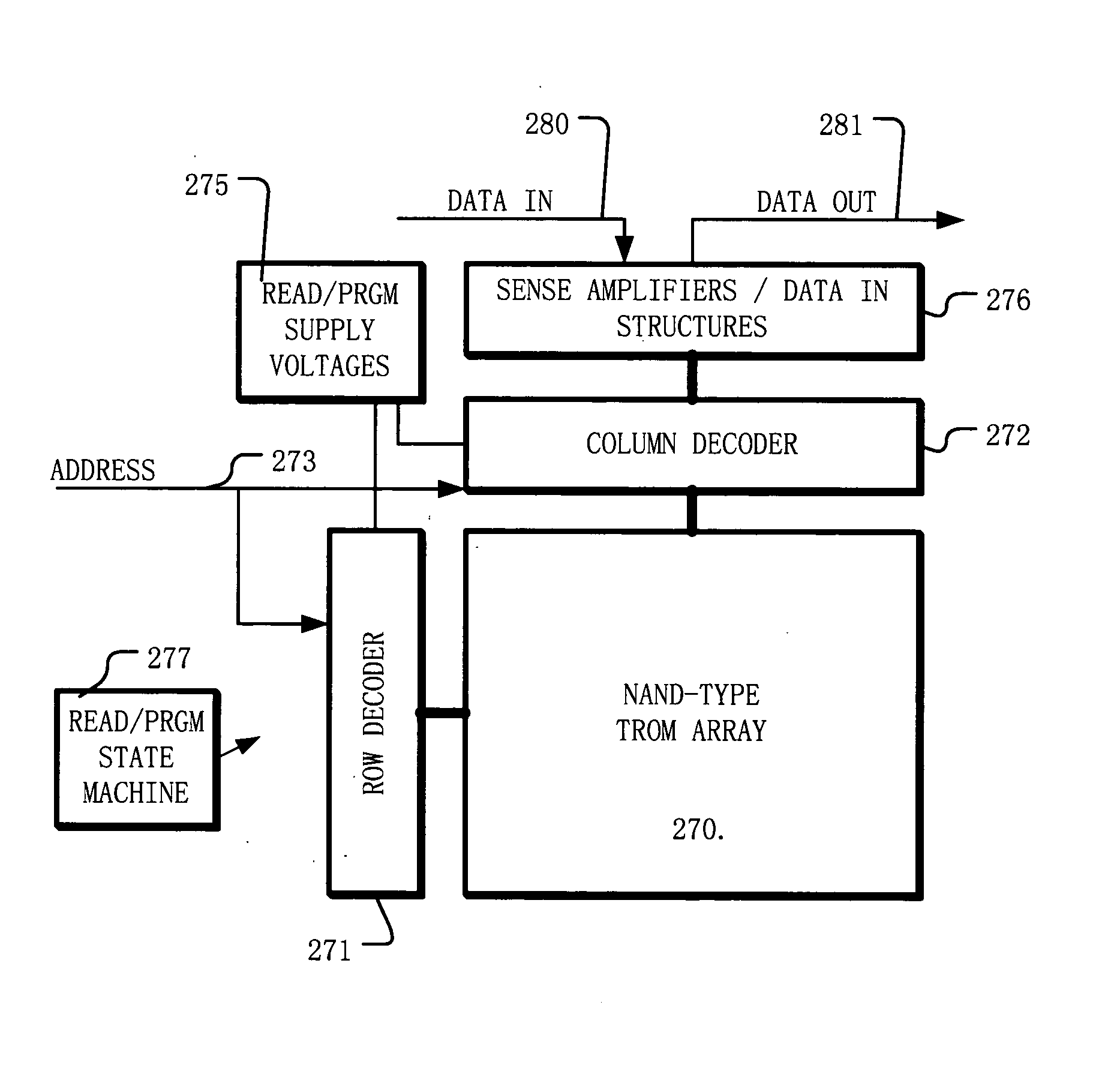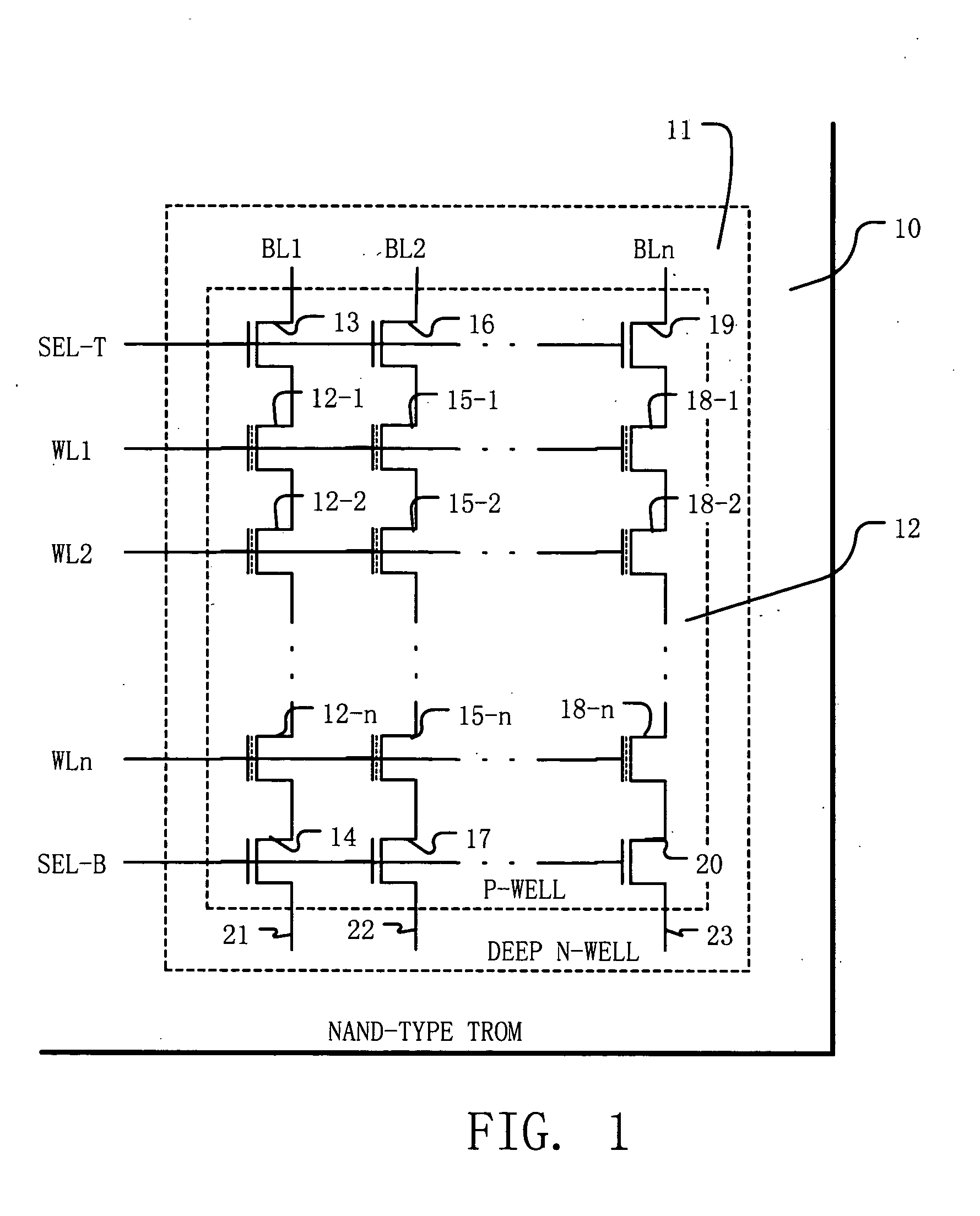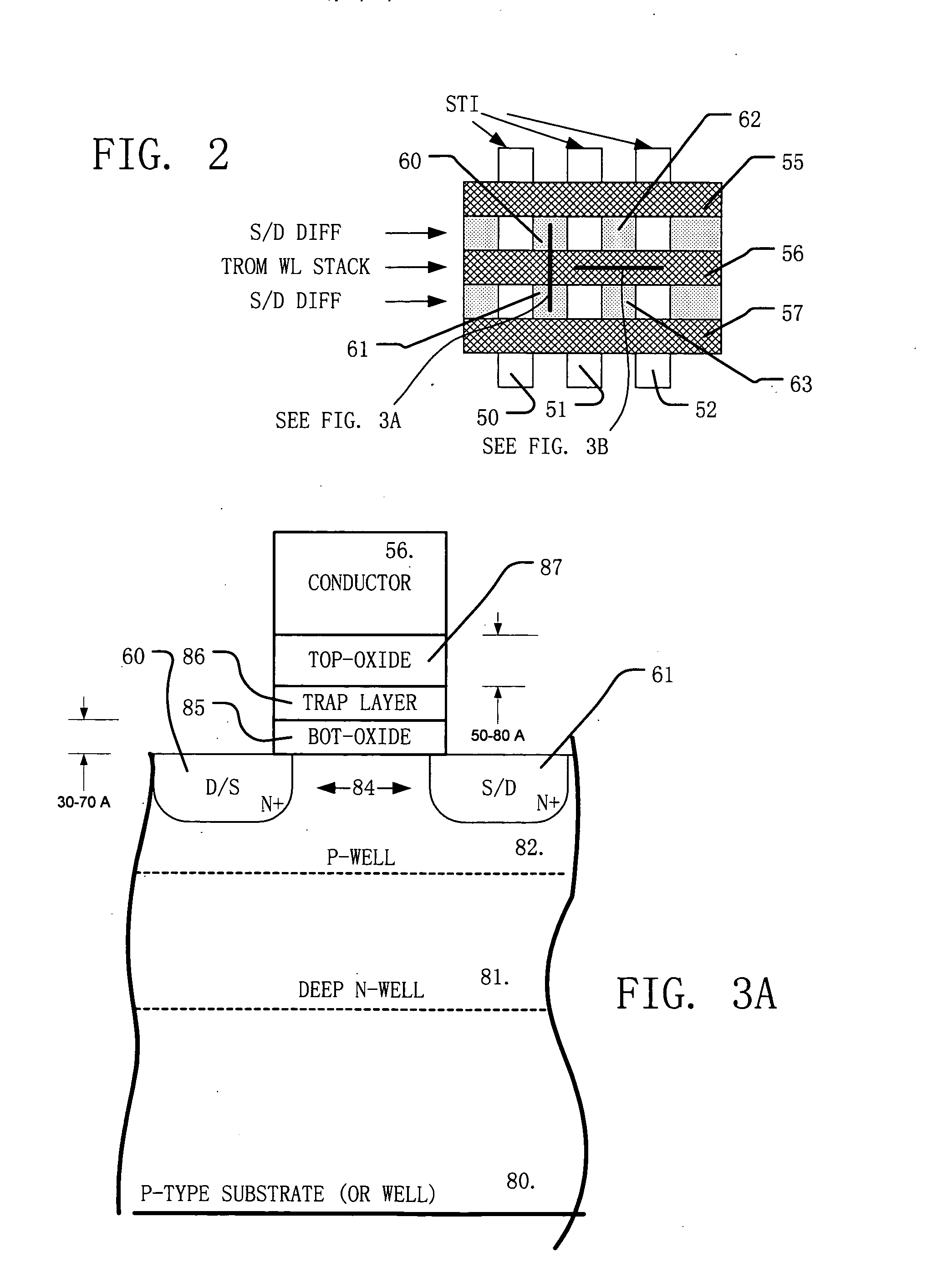Trap read only non-volatile memory (TROM)
a non-volatile memory and read-only technology, applied in the direction of logic circuits, instruments, pulse techniques, etc., can solve the problems of poor data retention and slow erase speed, poor data retention, and roadblocks in slow erase speed, etc., to achieve the effect of improving data retention, easy scaling with small and small design rules, and suitable for very high-density memory
- Summary
- Abstract
- Description
- Claims
- Application Information
AI Technical Summary
Benefits of technology
Problems solved by technology
Method used
Image
Examples
Embodiment Construction
[0028] A detailed description of embodiments of the present invention is provided with reference to FIGS. 1-10.
[0029]FIG. 1 illustrates a basic NAND array architecture implemented with TROM cells according to the present invention. As shown in FIG. 1, the TROM NAND array comprises a plurality of memory cells configured in columns and rows. The columns comprise sets of memory cells that are arranged in series, and which have select transistors on one or both ends of the set for coupling the set of memory cells to bit lines. Thus, as shown in FIG. 1, a first bit line BL1 is coupled via a top select transistor 13 to a set of memory cells 12-1, 12-2, . . . 12-n connected in series. At the opposite end of the set of memory cells, a select transistor 14 is provided. The select transistors 13, 14 are responsive to decoded block select signals SEL-T at the top of the set, and SEL-B at the bottom of the set. The select transistor 13 typically connects directly to the bit line BL1, while the...
PUM
 Login to View More
Login to View More Abstract
Description
Claims
Application Information
 Login to View More
Login to View More - R&D
- Intellectual Property
- Life Sciences
- Materials
- Tech Scout
- Unparalleled Data Quality
- Higher Quality Content
- 60% Fewer Hallucinations
Browse by: Latest US Patents, China's latest patents, Technical Efficacy Thesaurus, Application Domain, Technology Topic, Popular Technical Reports.
© 2025 PatSnap. All rights reserved.Legal|Privacy policy|Modern Slavery Act Transparency Statement|Sitemap|About US| Contact US: help@patsnap.com



